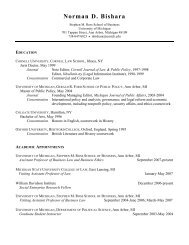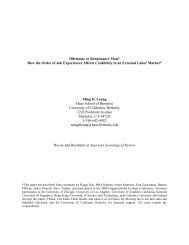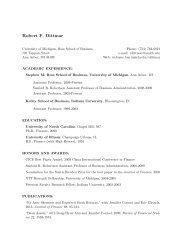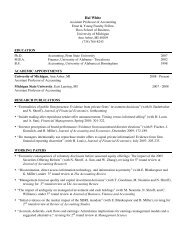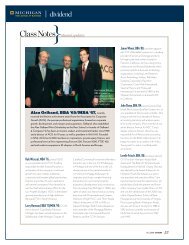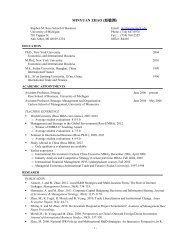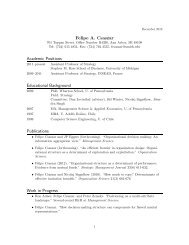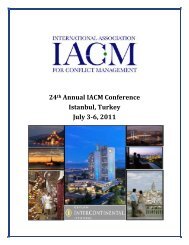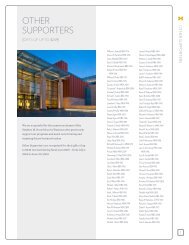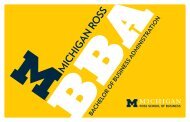DIvIDEnD - Stephen M. Ross School of Business - University of ...
DIvIDEnD - Stephen M. Ross School of Business - University of ...
DIvIDEnD - Stephen M. Ross School of Business - University of ...
You also want an ePaper? Increase the reach of your titles
YUMPU automatically turns print PDFs into web optimized ePapers that Google loves.
illustration by michael austin<br />
greening the Supply chain<br />
A Q&A with MScM Program director Ravi Anupindi<br />
introducing environmental considerations to a firm’s<br />
supply chain <strong>of</strong>ten can be a source <strong>of</strong> innovation and<br />
competitive advantage. it also can be a huge challenge, since<br />
tasks within a supply chain are interlinked. one sustainability<br />
initiative may have ripple effects not only within the firm,<br />
but also across firm boundaries and geography. in the following<br />
Q&a, Ravi Anupindi, program director <strong>of</strong> the master <strong>of</strong><br />
supply chain management Program, assesses the risks and<br />
benefits <strong>of</strong> greening a company’s supply chain. anupindi is<br />
a michael R. and mary kay hallman fellow and associate<br />
pr<strong>of</strong>essor <strong>of</strong> operations and management science.<br />
DIvIDEND: What defines a green supply chain?<br />
ANUPINDI: the classic model consists <strong>of</strong> the following<br />
phases: plan, buy, make, move, and sell. when you take environmental<br />
issues into consideration, not only does it affect<br />
how these phases are executed, it also expands the model<br />
to add the consumption phase. in general, you wouldn’t<br />
think how a product is consumed would have<br />
anything to do with the other phases. the<br />
environmental footprint <strong>of</strong> consumption is<br />
influenced by the design <strong>of</strong> the product, which<br />
in turn affects how the supply chain works<br />
in terms <strong>of</strong> cost, complexity, and efficiency.<br />
environmental considerations also add a postconsumption<br />
phase <strong>of</strong> return, reuse, and/or<br />
recycle. adding these phases in a supply chain<br />
starts a reverse flow, transforming the supply<br />
chain into a closed-loop system.<br />
DIvIDEND: What is leading companies in this direction:<br />
altruism or the bottom line?<br />
ANUPINDI: there are three key drivers: regulation (or fear<br />
<strong>of</strong> it), efficiency, and customer opportunity. the present<br />
concern is that being green equates to higher cost. But<br />
there’s a lot that can be done right now in terms <strong>of</strong> making<br />
spring 2010 <strong>DIvIDEnD</strong> 21



